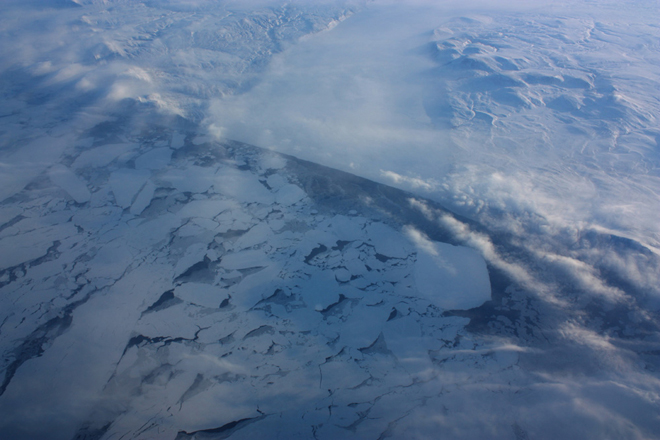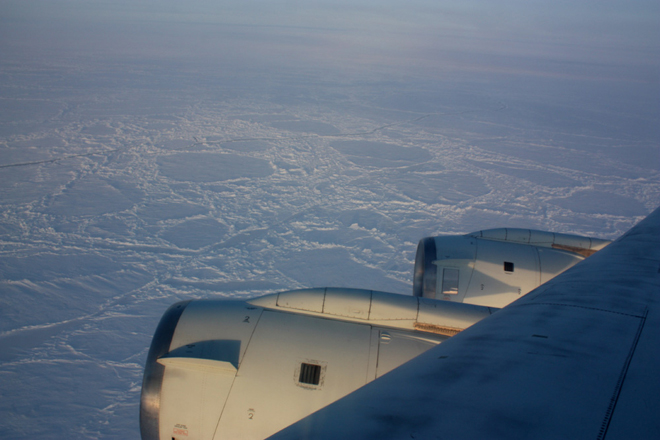From: Michelle Williams, video producer, NASA’s Goddard Space Flight Center
Flying in a four-engine jet at 1500 feet above Arctic sea ice for eight hours sounded a little nerve-racking before I left for Thule, Greenland with Operation IceBridge. I am tagging along as a video producer for the first two weeks of the mission, and it has been a fascinating experience so far.

Video producer Michelle Williams shoots high-definition video on a camera that is versatile and lightweight, which Williams says is ideal for capturing footage from Icebridge flights. Credit: NASA/Dick Ewers
We landed in Thule on Monday, March 22, after an overnight transit flight from Palmdale, California. As we approached the airstrip, the pilots kindly invited me to film the landing from the cockpit.

Stunning scenery from the flight on March 22 overshadowed the anxiety that video producer Michelle Williams felt prior to the IceBridge mission. Credit: NASA/Michelle Williams
Our science flight on Tuesday, March 23, was a sea ice flight near Canada’s Ellesmere Island. We flew at an altitude of about 20,000 feet for an hour and then descended to between 600-1500 feet for the remainder of the flight over the frozen surface of the Arctic Ocean.

Sea ice is visible from the window of the DC-8 during a mission to map the ice near Ellesmere Island. Credit: NASA/Michelle Williams
NASA’s 40-year old DC-8 is a workhorse, and it is surprisingly steady at such a low altitude. The plane was not originally designed for low-altitude flying, but it performs well in this environment. Pilots Dick Ewers and Bill Brockett have over 80 years of experience between the two of them, and with the help of navigator Manny Antimisiaris and flight engineer Doug Baker they expertly maneuver the plane over the ice.
The glacier flight on Wednesday, March 24, was just as spectacular. We flew a grid pattern over the upper and lower segments of the Petermann Glacier, winding along the river of ice to sea level and back to the interior of the island.

Ice in the shadow of Arctic hills poses a stark, surreal contrast. Video producer Michelle Williams darts from window to window, trying to get a clear and steady shot of the ice below and the cliffs on either side of the plane. Credit: NASA/Michelle Williams
The footage I’ve collected so far will be used for a number of IceBridge videos when I return to NASA’s Goddard Space Flight Center in April. Keep an eye on the IceBridge site and the multimedia gallery.





